| Sport | Road bicycle racing |
|---|---|
| Competition | Tour de France |
| Awarded for | Last in classification |
| English name | Red lantern |
| Local name | Lanterne rouge (French) |
| History | |
| First award | 1903 |
| Editions | 110 (as of 2023) |
| First winner | |
| Most wins | |
| Most recent | |
The lanterne rouge is the competitor in last place in the Tour de France. The phrase comes from the French for "Red Lantern" and refers to the red lantern hung on the rear vehicle of a passenger railway train or the brake van of a freight train, which signalmen would look for in order to make sure none of the couplings had become disconnected.[1]
Cultural uses
In the Tour de France the rider who finishes last, rather than dropping out along the way, is accorded the distinction of lanterne rouge. Because of the popularity it affords, riders may compete for the last position rather than settling for a place near the back.[2] Often the rider who comes last is remembered while those a few places ahead are forgotten. The revenue the last rider will generate from later appearance fees can be greater than if he had finished second to last, although this was more true when riders still made much of their income from post-Tour criteriums.[3]
In the 1979 Tour de France, Gerhard Schönbacher and Philippe Tesnière were on the last two spots in the general classification, less than one minute apart.[4] Tesnière had already finished last in the 1978 Tour, so he was aware of the publicity associated with being the lanterne rouge. In the 21st stage, a time trial, Tesnière therefore rode slowly. The winner of the time trial, Bernard Hinault, took 1 hour, 8 minutes and 53 seconds to cover the 48.8 km, Schönbacher used 1 hour, 21 minutes and 52 seconds,[5] while Tesniere rode it in 1 hour, 23 minutes and 32 seconds; both were slower than all other cyclists.[6] Tesnière's time was more than 20% slower than Hinault's, which meant that he had missed the time cut, and was taken out of the race.[6]
The Tour organisation did not like the attention that the lanterne rouge received, and for the 1980 Tour devised a rule to make it more difficult to finish last: between the 14th and the 20th stage, the rider last in the general classification was removed from the race.[7] Still, Schönbacher managed to finish last in that race. Before the Tour, Schönbacher was promised by his sponsor that he would receive extra money if he finished in last place. After the last stage of the Tour, his team leader Patrick Lefevere told Schönbacher that he would not get the money, and after a heated discussion, Schönbacher was fired.[8]
Red lantern holders are often great sprinters or great riders of shorter races who are not fit enough for such a long race as the Tour de France, or who try to finish the race despite injury, as in the case of Sam Bennett, who finished last after breaking a finger in the opening stage of the 2016 Tour, but eventually won the green jersey in 2020.[9][10]
In 2018 Lawson Craddock became the first rider in the history of the Tour de France to have the distinction of lanterne rouge for all stages of the entire tour. He crashed in the 1st stage resulting in facial lacerations and a fractured scapula. Despite his left eye being smashed and the pain of fractured scapula, he continued to race and finished the stage which led to a picture of his bloodied and grimacing face going viral. Later that day he posted an announcement on social media that he was donating $100 for every stage he finished to the Greater Houston Cycling Association to help rebuild the Alkek Velodrome that had been damaged by Hurricane Harvey. A GoFundMe page was also setup for donations to go directly to the velodrome. Craddock continued to ride all the remaining stages which garnered much publicity for the fundraising efforts and eventually over US$250,000 being raised for the cause.[11][12] In this case the lanterne rouge has been described as being worn as "a badge of courage" and winning it as "a triumph of sporting endeavour".[11]
Lanternes rouges of the Tour de France
- 1903
.svg.png.webp) Arsène Millocheau (FRA)
Arsène Millocheau (FRA) - 1904
.svg.png.webp) Antoine Deflotrière (FRA)
Antoine Deflotrière (FRA) - 1905
.svg.png.webp) Clovis Lacroix (FRA)
Clovis Lacroix (FRA) - 1906
.svg.png.webp) Georges Bronchard (FRA)
Georges Bronchard (FRA) - 1907
.svg.png.webp) Albert Chartier (FRA)
Albert Chartier (FRA) - 1908
.svg.png.webp) Henri Anthoine (FRA)
Henri Anthoine (FRA) - 1909
.svg.png.webp) Georges Devilly (FRA)
Georges Devilly (FRA) - 1910
.svg.png.webp) Constant Collet (FRA)
Constant Collet (FRA) - 1911
.svg.png.webp) Lucien Roquebert (FRA)
Lucien Roquebert (FRA) - 1912
.svg.png.webp) Maurice Lartigue (FRA)
Maurice Lartigue (FRA) - 1913
.svg.png.webp) Henri Alavoine (FRA)
Henri Alavoine (FRA) - 1914
.svg.png.webp) Henri Leclerc (FRA)
Henri Leclerc (FRA) - 1915–18: no tour due to World War I
- 1919
.svg.png.webp) Jules Nempon (FRA)
Jules Nempon (FRA) - 1920
.svg.png.webp) Charles Raboisson (FRA)
Charles Raboisson (FRA) - 1921
.svg.png.webp) Henri Catelan (FRA)
Henri Catelan (FRA) - 1922
.svg.png.webp) Daniel Masson (FRA)
Daniel Masson (FRA) - 1923
.svg.png.webp) Daniel Masson (FRA)
Daniel Masson (FRA) - 1924
.svg.png.webp) Victor Lafosse (FRA)
Victor Lafosse (FRA) - 1925
.svg.png.webp) Fernand Besnier (FRA)
Fernand Besnier (FRA) - 1926
.svg.png.webp) André Drobecq (FRA)
André Drobecq (FRA) - 1927
.svg.png.webp) Jacques Pfister (FRA)
Jacques Pfister (FRA) - 1928
.svg.png.webp) Edouard Persin (FRA)
Edouard Persin (FRA) - 1929
.svg.png.webp) André Léger (FRA)
André Léger (FRA) - 1930
.svg.png.webp) Marcel Ilpide (FRA)
Marcel Ilpide (FRA) - 1931
.svg.png.webp) Richard Lamb (AUS)
Richard Lamb (AUS) - 1932
.svg.png.webp) Rudolf Risch (GER)
Rudolf Risch (GER) - 1933
.svg.png.webp) Ernest Neuhard (FRA)
Ernest Neuhard (FRA) - 1934
.svg.png.webp) Antonio Folco (ITA)
Antonio Folco (ITA) - 1935
.svg.png.webp) Willy Kutschbach (GER)
Willy Kutschbach (GER) - 1936
.svg.png.webp) Aldo Bertocco (FRA)
Aldo Bertocco (FRA) - 1937
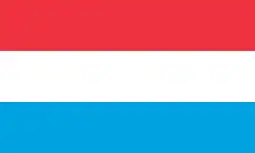 Aloyse Klensch (LUX)
Aloyse Klensch (LUX) - 1938
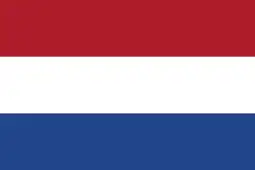 Janus Hellemons (NED)
Janus Hellemons (NED) - 1939
.svg.png.webp) Armand Le Moal (FRA)
Armand Le Moal (FRA) - 1940–46: no tour due to World War II
- 1947
.svg.png.webp) Pietro Tarchini (SUI)
Pietro Tarchini (SUI) - 1948
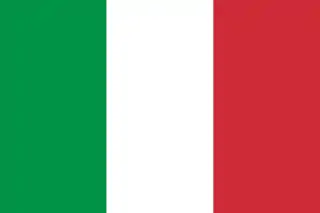 Vittorio Seghezzi (ITA)
Vittorio Seghezzi (ITA) - 1949
 Guido De Santi (ITA)
Guido De Santi (ITA) - 1950
.svg.png.webp) Fritz Zbinden (SUI)
Fritz Zbinden (SUI) - 1951
.svg.png.webp) Abdel-Kader Zaaf (FRA)
Abdel-Kader Zaaf (FRA) - 1952
.svg.png.webp) Henri Paret (FRA)
Henri Paret (FRA) - 1953
.svg.png.webp) Claude Rouer (FRA)
Claude Rouer (FRA) - 1954
 Marcel Dierkens (LUX)
Marcel Dierkens (LUX) - 1955
 Tony Hoar (GBR)
Tony Hoar (GBR) - 1956
.svg.png.webp) Roger Chaussabel (FRA)
Roger Chaussabel (FRA) - 1957
.svg.png.webp) Guy Million (FRA)
Guy Million (FRA) - 1958
.svg.png.webp) Walter Favre (SUI)
Walter Favre (SUI) - 1959
 Louis Bisilliat (FRA)
Louis Bisilliat (FRA) - 1960
.svg.png.webp) José Herrero Berrendero (ESP)
José Herrero Berrendero (ESP) - 1961
 André Geneste (FRA)
André Geneste (FRA) - 1962
 Augusto Marcaletti (ITA)
Augusto Marcaletti (ITA) - 1963
.svg.png.webp) Willy Derboven (BEL)
Willy Derboven (BEL) - 1964
 Anatole Novak (FRA)
Anatole Novak (FRA) - 1965
 Joseph Groussard (FRA)
Joseph Groussard (FRA) - 1966
 Paolo Mannucci (ITA)
Paolo Mannucci (ITA) - 1967
 Jean-Pierre Genet (FRA)
Jean-Pierre Genet (FRA) - 1968
 John Clarey (GBR)
John Clarey (GBR) - 1969
 André Wilhelm (FRA)
André Wilhelm (FRA) - 1970
 Frits Hoogerheide (NED)
Frits Hoogerheide (NED) - 1971
 Georges Chappe (FRA)
Georges Chappe (FRA) - 1972
 Alain Bellouis (FRA)
Alain Bellouis (FRA) - 1973
 Jacques-André Hochart (FRA)
Jacques-André Hochart (FRA) - 1974
 Lorenzo Alaimo (ITA)
Lorenzo Alaimo (ITA) - 1975
 Jacques Boulas (FRA)
Jacques Boulas (FRA) - 1976
 Aad van den Hoek (NED)
Aad van den Hoek (NED) - 1977
.svg.png.webp) Roger Loysch (BEL)
Roger Loysch (BEL) - 1978
 Philippe Tesnière (FRA)
Philippe Tesnière (FRA) - 1979
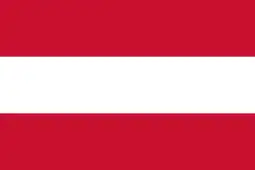 Gerhard Schönbacher (AUT)
Gerhard Schönbacher (AUT) - 1980
 Gerhard Schönbacher (AUT)
Gerhard Schönbacher (AUT) - 1981
.svg.png.webp) Faustino Cueli (ESP)
Faustino Cueli (ESP) - 1982
.svg.png.webp) Werner Devos (BEL)
Werner Devos (BEL) - 1983
.svg.png.webp) Marcel Laurens (BEL)
Marcel Laurens (BEL) - 1984
.svg.png.webp) Gilbert Glaus (SUI)
Gilbert Glaus (SUI) - 1985
 Manrico Ronchiato (ITA)
Manrico Ronchiato (ITA) - 1986
 Ennio Salvador (ITA)
Ennio Salvador (ITA) - 1987
 Mathieu Hermans (NED)
Mathieu Hermans (NED) - 1988
.svg.png.webp) Dirk Wayenberg (BEL)
Dirk Wayenberg (BEL) - 1989
 Mathieu Hermans (NED)
Mathieu Hermans (NED) - 1990
 Rodolfo Massi (ITA)
Rodolfo Massi (ITA) - 1991
 Rob Harmeling (NED)
Rob Harmeling (NED) - 1992
 Fernando Quevedo (ESP)
Fernando Quevedo (ESP) - 1993
.svg.png.webp) Edwig Van Hooydonck (BEL)
Edwig Van Hooydonck (BEL) - 1994
 John Talen (NED)
John Talen (NED) - 1995
 Bruno Cornillet (FRA)
Bruno Cornillet (FRA) - 1996
 Jean-Luc Masdupuy (FRA)
Jean-Luc Masdupuy (FRA) - 1997
 Philippe Gaumont (FRA)
Philippe Gaumont (FRA) - 1998
 Damien Nazon (FRA)
Damien Nazon (FRA) - 1999
 Jacky Durand (FRA)
Jacky Durand (FRA) - 2000
 Olivier Perraudeau (FRA)
Olivier Perraudeau (FRA) - 2001
 Jimmy Casper (FRA)
Jimmy Casper (FRA) - 2002
 Igor Flores (ESP)
Igor Flores (ESP) - 2003
.svg.png.webp) Hans De Clercq (BEL)
Hans De Clercq (BEL) - 2004
 Jimmy Casper (FRA)
Jimmy Casper (FRA) - 2005
 Iker Flores (ESP)
Iker Flores (ESP) - 2006
.svg.png.webp) Wim Vansevenant (BEL)
Wim Vansevenant (BEL) - 2007
.svg.png.webp) Wim Vansevenant (BEL)
Wim Vansevenant (BEL) - 2008
.svg.png.webp) Wim Vansevenant (BEL)
Wim Vansevenant (BEL) - 2009
.svg.png.webp) Yauheni Hutarovich (BLR)
Yauheni Hutarovich (BLR) - 2010
 Adriano Malori (ITA)
Adriano Malori (ITA) - 2011
 Fabio Sabatini (ITA)
Fabio Sabatini (ITA) - 2012
 Jimmy Engoulvent (FRA)
Jimmy Engoulvent (FRA) - 2013
.svg.png.webp) Svein Tuft (CAN)
Svein Tuft (CAN) - 2014
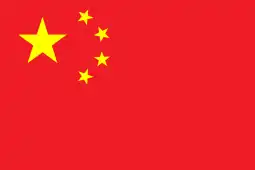 Ji Cheng (CHN)
Ji Cheng (CHN) - 2015
 Sébastien Chavanel (FRA)
Sébastien Chavanel (FRA) - 2016
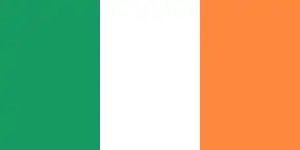 Sam Bennett (IRE)
Sam Bennett (IRE) - 2017
 Luke Rowe (GBR)
Luke Rowe (GBR) - 2018
 Lawson Craddock (USA)
Lawson Craddock (USA) - 2019
 Sebastian Langeveld (NED)
Sebastian Langeveld (NED) - 2020
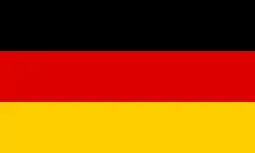 Roger Kluge (GER)
Roger Kluge (GER) - 2021
.svg.png.webp) Tim Declercq (BEL)
Tim Declercq (BEL) - 2022
.svg.png.webp) Caleb Ewan (AUS)
Caleb Ewan (AUS) - 2023
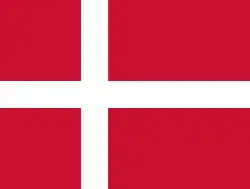 Michael Mørkøv (DEN)
Michael Mørkøv (DEN)
Multiple lanternes rouges of the Tour de France
| Wins | Name | Years |
|---|---|---|
| 3 | 2006, 2007, 2008 | |
| 2 | 1922, 1923 | |
| 1979, 1980 | ||
| 1987, 1989 | ||
| 2001, 2004 |
Spain's Igor Flores received the lanterne rouge in 2002, and his brother Iker Flores received it in 2005.
Lanternes rouges of the Tour de France by nationality
| Wins | Country | First | Most Recent (if more than 1) |
|---|---|---|---|
| 53 | 1903 | 2015 | |
| 11 | 1934 | 2011 | |
| 1963 | 2021 | ||
| 8 | 1938 | 2019 | |
| 5 | 1960 | 2005 | |
| 4 | 1947 | 1984 | |
| 3 | 1932 | 2020 | |
| 1955 | 2017 | ||
| 2 | 1937 | 1954 | |
| 1979 | 1980 | ||
| 1931 | 2022 | ||
| 1 | 2009 | ||
| 2013 | |||
| 2014 | |||
| 2023 | |||
| 2016 | |||
| 2018 |
The first 24 red lanterns went to France between 1903 and 1930, with the French total reaching 53 in 2015. The rest of the world received its first red lantern in 1931, and eventually equaled France's total of 53 in 2019, and overtook it with 54 in 2020.
See also
References
- ↑ Strickland, Bill. "The Tour's Master of Last Place". The Wall Street Journal, 25 July 2008.
- ↑ "Lanterne Rouge". 14 July 2012.
- ↑ "Lanterne Rouge: The Honor Of Being Last In The Tour de France".
- ↑ "Tour: Clasificaciones Oficiales". El Mundo Deportivo (in Spanish). 19 July 1979. p. 21. Retrieved 24 May 2011.
- ↑ "66ème Tour de France – 21ème étape". Memoire du Cyclisme (in French). Retrieved 24 May 2011.
- 1 2 "Kostbare vergissing Tesnière". Leidsch Dagblad (in Dutch). Regionaal Archief Leiden. 20 July 1979. p. 9. Archived from the original on 8 October 2012. Retrieved 24 May 2011.
- ↑ "67ème Tour de France". Memoire du Cyclisme (in French). Archived from the original on 20 January 2012. Retrieved 24 May 2011.
- ↑ "Schönbacher weer laatste". Leidsche Courant (in Dutch). Regionaal Archief Leiden. 21 July 1980. p. 10. Archived from the original on 19 August 2011. Retrieved 24 May 2011.
- ↑ Startt, James (24 July 2016). "Aérogramme: Red Lantern". Peloton Magazine. Retrieved 20 September 2020.
It is always impressive to look at the long list of established champions that have won this dubious prize, as it is often won by great sprinters or classics riders. Many are great riders in their own right, but they simply are not fit for the overall rigors of the three-week Tour. ... Sam Bennett ... was caught up in the spectacular crash on stage 1 with the finish line just in sight. ... For the record, Bennett suffered a broken finger in his right hand. ...
- ↑ Michel, Lucas (20 September 2020). "TOUR DE FRANCE : BENNETT S'IMPOSE AU SPRINT SUR LES CHAMPS-ELYSÉES (Tour de France: Bennet wins the sprint on the Champs-Élysées)". Le Figaro (in French). Retrieved 20 September 2020.
De lanterne rouge en 2016 à maillot vert en 2020 (From red lantern in 2016 to green jersey in 2020)
- 1 2 Ingle, Sean (August 6, 2018). "Last but not least: Craddock wears Tour's red lantern as badge of courage". theguardian.com. Retrieved 6 August 2018.
The American rider may have come last in the Tour de France but his grit and persistence in carrying on after a dreadful first-stage crash made it a triumph of sporting endeavour....So far the donations stand at more than $250,000.
- ↑ Scott, Roxanna (July 29, 2018). "American cyclist Lawson Craddock is last in Tour de France, raises $192K for velodrome". USA TODAY. Retrieved July 29, 2018.